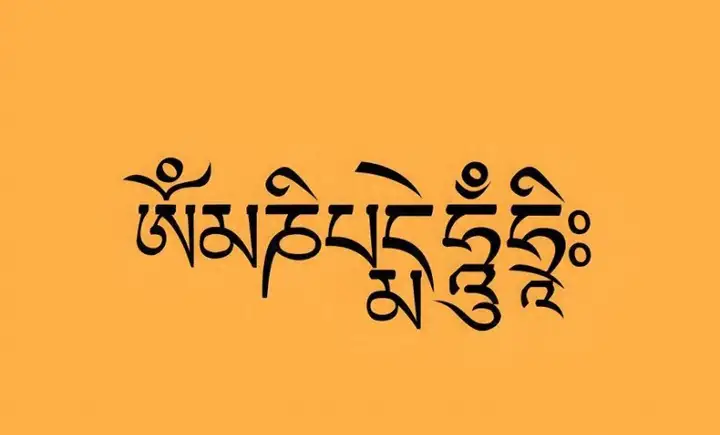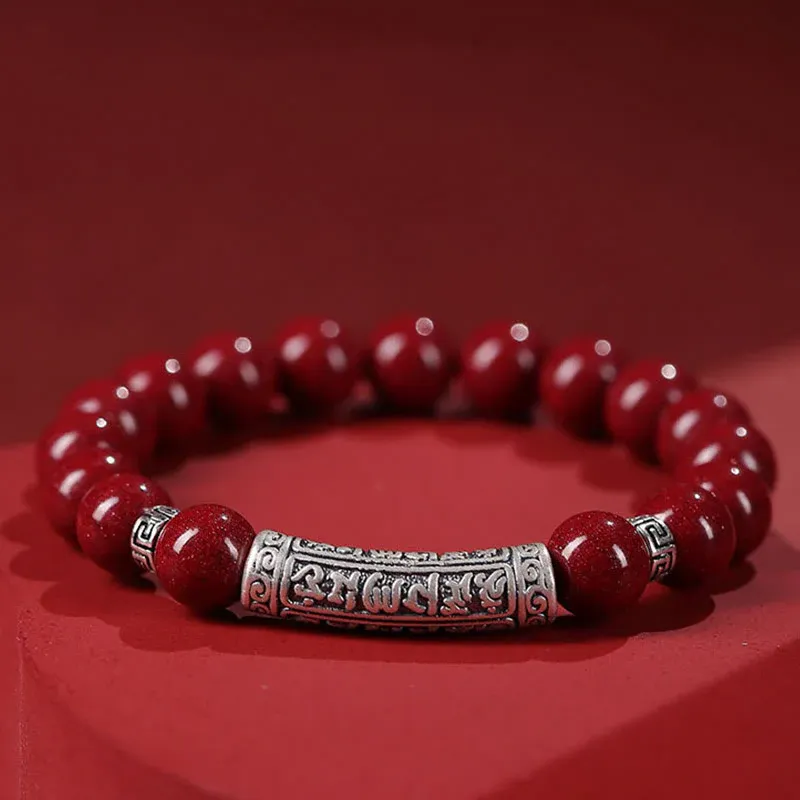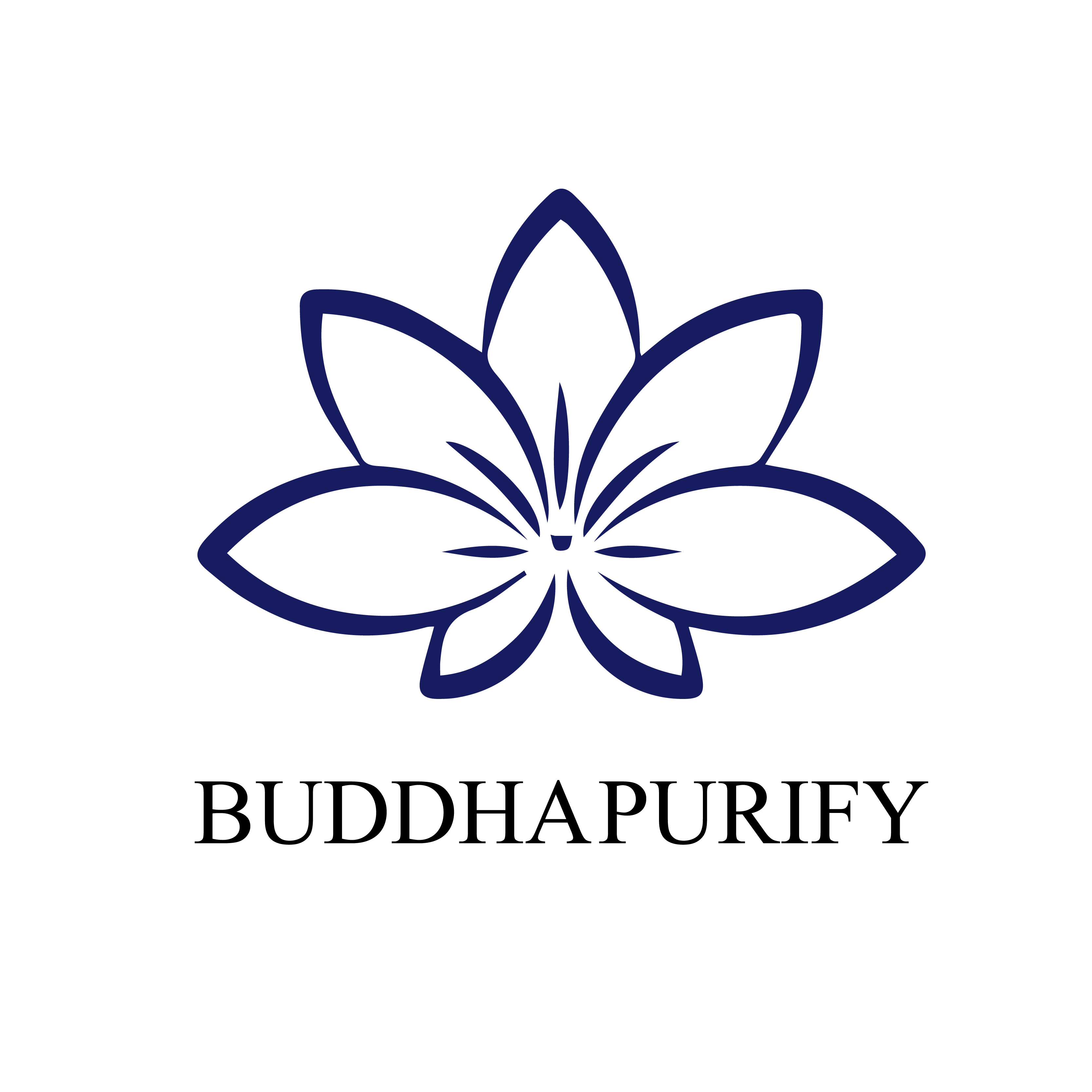Exploring the Deep Significance of the Six-Word Mantra
When people mention the Six-Character Mantra, they often think of an important Buddhist incantation and the power it holds for blessing and protection. This ancient mantra holds special significance and function in both Tibetan and Han Buddhism, representing the essence of wisdom and compassion. Reciting the Six-Character Mantra is believed to purify the mind, invoke blessings, and enhance wisdom, thus occupying a vital position in Buddhist practice.
Origin of the Six-Character Mantra: The Six-Character Mantra (Om Mani Padme Hum) is one of the most important mantras in Buddhism, originating from Sanskrit scriptures. It first appeared in the "Diamond Sutra" and was later widely disseminated in Tibetan and Han Buddhism. The origins of the Six-Character Mantra can be traced back to the 1st century BCE to the 1st century CE, believed to be inspired by the teachings and wisdom of the Buddha.
In Tibetan Buddhism, the Six-Character Mantra is regarded as the heart mantra of Avalokiteshvara, embodying compassion and wisdom. It is considered one of the most powerful and sacred mantras, used in recitation, chanting, and practice. In Han Buddhism, the Six-Character Mantra is also widely inherited and applied, viewed as an important incantation for purifying the mind, invoking blessings, and enhancing wisdom.
The transmission and influence of the Six-Character Mantra cross different Buddhist traditions and regions, making it an indispensable part of Buddhist practice. Its origin and transmission showcase its significance and profound impact within Buddhism.
Differences between Tibetan and Han Buddhism regarding the Six-Character Mantra:
1. Application Methods: In Tibetan Buddhism: The Six-Character Mantra (Om Mani Padme Hum) is regarded as the heart mantra of Avalokiteshvara, embodying compassion and wisdom. It is widely used in practice, chanting, and recitation, believed to possess the power to purify the mind, invoke blessings, and enhance wisdom.
Applications of the Six-Character Mantra in Tibetan Buddhism include:
- Recitation and Chanting: Devotees often recite the Six-Character Mantra as a form of practice and prayer. In temples and homes, people chant the mantra to seek the blessings and empowerment of Avalokiteshvara.
- Art and Decoration: The Six-Character Mantra frequently appears in Buddhist artifacts and decorations, such as prayer wheels, thangkas, statues, and prayer flags, serving as a symbol and expression of blessing.
- Practice: Practitioners focus on the Six-Character Mantra as an object of meditation, continuously reciting it to purify the mind and enhance wisdom and compassion.
The Six-Character Mantra has a profound impact in Tibetan Buddhism, viewed as an embodiment of Avalokiteshvara and a symbol of compassion, thus holding a revered position among devotees and practitioners.
In Han Buddhism: The Six-Character Mantra (Om Mani Padme Hum) is also widely inherited and applied. It is regarded as an important incantation for purifying the mind, invoking blessings, and enhancing wisdom, used by devotees and practitioners in their practice and recitation.
Applications of the Six-Character Mantra in Han Buddhism include:
- Chanting and Recitation: In temples and homes, devotees often recite the Six-Character Mantra as a form of practice and prayer. It is believed that reciting the mantra can purify the mind, invoke blessings, and enhance wisdom.
- Buddhist Ceremonies: The Six-Character Mantra is also widely used in Buddhist ceremonies and rituals as a prayer and blessing incantation to receive the empowerment and protection of Avalokiteshvara.
- Meditation and Practice: Practitioners use the Six-Character Mantra as a focus for meditation, continuously reciting it to cultivate concentration, compassion, and wisdom.
The Six-Character Mantra holds an important position in Han Buddhism, regarded as the heart mantra of Avalokiteshvara, representing the essence of compassion and wisdom. It is widely inherited and applied among devotees and practitioners, becoming an indispensable part of Buddhist practice.
2. Transmission and Recitation Methods: In Tibetan Buddhism, the pronunciation of the Six-Character Mantra is "Om Mani Padme Hum" (ཨོཾ་མ་ཎི་པྲ་རྡོ་རྗེ་ཧཱུྃ།). The recitation method typically involves vocal or silent repetition, where devotees repeatedly recite the mantra as a form of practice and prayer. In the practice of practitioners, the mantra is also used as an object of meditation, purifying the mind and enhancing wisdom and compassion through continuous recitation.
In Han Buddhism, the pronunciation of the Six-Character Mantra is "Om Mani Padme Hum." The recitation method is similar, where devotees also recite the mantra vocally or silently as a form of practice and prayer. In Buddhist ceremonies and rituals, the Six-Character Mantra is widely employed as a prayer and blessing incantation.
Despite some differences in transmission and recitation methods, the Six-Character Mantra is viewed in both Tibetan and Han Buddhism as an important incantation for purifying the mind, invoking blessings, and enhancing wisdom, becoming a significant part of practitioners' spiritual practices.
3. Significance of the Six-Character Mantra: The Six-Character Mantra is a crucial incantation in Buddhism, with each syllable carrying specific meanings and functions:
- Om (ཨོཾ་): Represents the body of the Buddha, symbolizing infinite wisdom and compassion. Reciting this syllable helps purify the body and enhance wisdom and compassion.
- Ma (མ་): Represents the speech of the Buddha, symbolizing the power of true words and wisdom. Reciting this syllable helps purify speech and enhance wisdom and the expression of true knowledge.
- Ni (ཎི་): Represents the heart of the Buddha, symbolizing infinite joy and the essence of wisdom. Reciting this syllable helps purify the mind and enhance wisdom and inner joy.
- Pad (པྲ་): Represents the precious jewel of the Buddha, symbolizing the methods and means of wisdom. Reciting this syllable helps purify actions and enhance wisdom and correct methods.
- Me (རྡོ་): Represents the Buddha's jewel, symbolizing the realization of wishes and the goals of wisdom. Reciting this syllable helps purify desires and enhance wisdom and the realization of goals.
- Hum (རྗེ་ཧཱུྃ།): Represents the wisdom radiance of the Buddha, symbolizing the essence of wisdom and ultimate liberation. Reciting this syllable helps purify wisdom and enhance wisdom and the attainment of liberation.
The Six-Character Mantra embodies the compassion and wisdom of the Buddha, as well as the state of enlightenment. It is regarded as an important incantation for purifying the mind, invoking blessings, and enhancing wisdom, used by devotees and practitioners in their practice and recitation. This mantra holds profound significance in Buddhism and is widely inherited and applied.
Brand Introduction: BuddhaPurify
BuddhaPurify is a brand deeply rooted in the rich heritage of Chinese traditional culture and Buddhist practices. Our mission is to offer a unique blend of ancient wisdom and modern elegance through our products, which are designed to enhance spiritual well-being, personal growth, and holistic health.
Foundation and Philosophy
Inspired by the timeless teachings of Buddhism and the profound traditions of Chinese culture, BuddhaPurify is dedicated to providing products that reflect the serene and enlightened aspects of these ancient philosophies. Our brand is built on the principles of mindfulness, purity, and spiritual harmony, aiming to bring balance and tranquility to our customers' lives.
Cultural Enrichment
We believe in the power of cultural enrichment and strive to educate and inspire our customers through the stories and meanings behind our products. Our brand seeks to bridge the gap between traditional spiritual practices and contemporary life, offering products that resonate with both ancient wisdom and modern sensibilities.
Conclusion
BuddhaPurify is more than just a brand; it is a journey into the heart of Chinese traditional culture and Buddhist spirituality. Through our thoughtfully curated products, we aim to support your quest for inner peace, spiritual growth, and a balanced life. Explore our collection and experience the harmonious blend of tradition and tranquility that defines BuddhaPurify.





